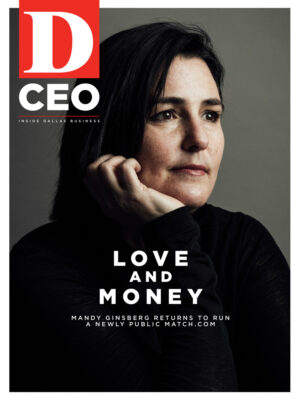Medieval mapmakers were known to denote dangerous or uncharted territories with the Latin phrase, “Hic sunt dracones” (“Here be dragons”). Today’s CEOs and general counsel might be tempted to use this phrase to describe the Eastern District of Texas, particularly its Marshall division. With a reputation for large verdicts and plaintiff-friendly atmosphere, this federal district—which encompasses not only East Texas but a sizeable chunk of North Texas as well, with divisions in Plano and Sherman—has become the country’s go-to filing destination for patent infringement lawsuits. According to legal analytics company Lex Machina, 2,540 patent lawsuits were filed in the Eastern District of Texas in 2015. That translates to nearly 44 percent of all cases filed in the country.
There are a number of reasons for this staggeringly uneven distribution. First, there is the Eastern District’s reputation as a plaintiff-friendly venue, where juries have a penchant for awarding sizeable verdicts. Another is the fact that venue laws dictating where cases can be filed have been liberalized over the years, making it easier for so called “patent trolls” (non-practicing entities whose “business” lies solely in enforcing patents it acquires) to sue there.
Federal law provides that patent infringement lawsuits may be brought only “in the judicial district where the defendant resides” or where the defendant has committed infringement and has a “regular and established place of business.” For companies with widespread distribution, that means a get-out-of-Texas-free card isn’t likely. But even for outfits with tenuous connections to Marshall, such as just having a website that can be accessed from East Texas, escaping venue in the Eastern District can be a long and costly journey.
The two judges who hear most of the district’s patent cases, U.S. District Judges Rodney Gilstrap and Robert W. Schroeder III, further require “the production of all relevant documents with respect to the merits of the case … and without request from the other side,” according to a brief filed with a federal appeals court by two public interest groups, the Electronic Frontier Foundation and Public Knowledge. Calling the Eastern District of Texas one of the “most notorious situations of forum shopping in recent history,” and asking the appellate court to “shut down the Eastern District of Texas,” the groups’ brief lamented that costly discovery and delays in hearing motions create “undue settlement pressure” on defendants forced to litigate in a district forum against patent owners with “minimal assets” and “dubious patent or infringement claims.”
“Judges … were applying Alice in a way that is far more favorable to patent owners.”
By August 2015, federal districts like the District of Delaware and the Northern District of California had granted or partially granted 90 percent and 82 percent, respectively, of such summary judgment motions in patent cases. The Eastern District of Texas granted only 27 percent, denying the remaining 73 percent.
On Dec. 1, 2015, certain significant changes in the Federal Rules of Civil Procedure took effect that directly impacted litigants in patent cases, including changes that now require patent plaintiffs to provide more information about the specific claims being infringed or naming a specific product accused of infringing. A search of the PACER federal courts database for November 2015 shows a whopping 829 patent cases filed in that month alone, with many of the plaintiffs hoping to skirt the impending stricter pleading rules. About 56 percent of these cases (470) were filed in the Eastern District of Texas—virtually all by LLCs that appear to be patent holding companies.
Michael C. Smith, an accomplished patent litigator with Marshall’s Siebman, Burg, Phillips & Smith who is the past president of the Eastern District of Texas Bar Association, says this large number of “relatively poor quality bulk filers” accounts for much of the Eastern District’s intimidating reputation. “They’ve dramatically increased the number of filings” and “are still generating a lot of negative publicity,” Smith says, but local practitioners know they “go away quickly and at little cost.”
Last fall, Marshall juries returned five defense verdicts in a row in patent infringement cases, including wins for tech giants Apple and Google. And in late September, U.S. District Judge Rodney Gilstrap, who hears more patent cases than any federal judge in the country, eliminated nearly 10 percent of his caseload in one fell swoop when he dismissed 168 lawsuits filed by Plano-based non-practicing entity eDekka LLC. It had been a serial plaintiff in the Eastern District, filing more than 100 lawsuits in 2014 alone—87 of which were filed during a single week in April. Applying the Supreme Court’s Alice ruling, Judge Gilstrap found that eDekka’s patent purportedly involved a method for storing and labeling information claims concepts that is abstract, thus ineligible for patent protection.
Equally important: Judge Gilstrap invited briefing on whether eDekka’s claims were so baseless that they justified making the plaintiff pay for the defendants’ legal fees. In December, he found that to be the case.
So has the turning tide of patent law, initiated by what attorney Smith calls “unprecedented Supreme Court intervention,” finally washed ashore in Marshall? Even if Judge Gilstrap’s rulings don’t signal a sea change, technology companies may find relief coming from other quarters. The U.S. Court of Appeals for the Federal Court is currently weighing a writ petition that could cause thousands of cases to be forced out of the Eastern District. The Texas Legislature enacted a new section of the Texas Business and Commerce Code that prohibits demand letters containing bad faith claims of patent infringement. And in Washington, both the proposed Innovation Act and Sen. John Cornyn’s Protecting American Talent and Entrepreneurship Act promise some measure of patent reform, if passed. 2016 could prove to be a very interesting year, indeed.






